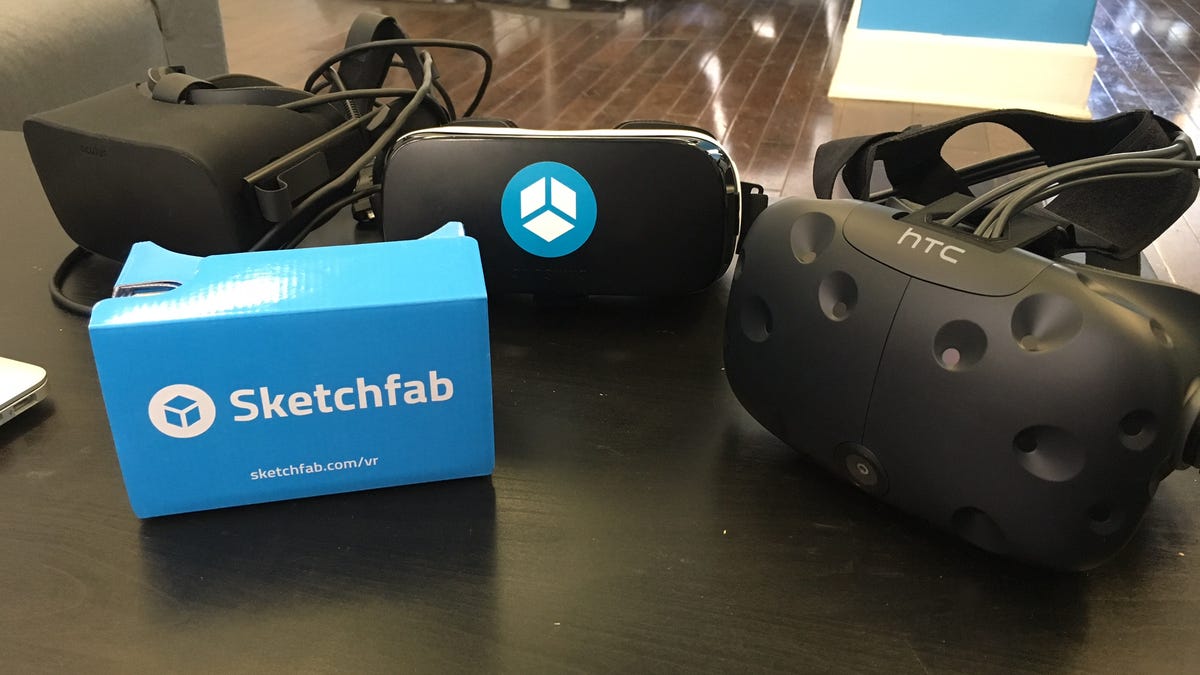Sketchfab's new VR app is a gateway to user-created 3D worlds
All of Sketchfab's files are VR-ready, and on the HTC Vive they look fantastic. It also shows how useful VR can be as a design tool.

Exploring other worlds in virtual reality is amazing, but exploring endless bits of user-created 3D stuff might be even better.
Sketchfab gained popularity as a storehouse for models that could be 3D printed, but it's a weirder and more fascinating place than that. The website's actually a repository of hundreds of thousands of scans and even 3D videos, all of them VR- and AR-ready. And now there's a VR app for Sketchfab that lets you view other people's ideas and worlds in nearly any format.
The app is available now on iOS, Android and Steam and hitting Samsung's Gear VR on Thursday -- a release for Oculus Rift is planned but not out yet. It shows a curated set of Sketchfab 3D renders across six different categories: places, animals and creatures, cultural heritage, game worlds, cars and education. I tried a bunch at Sketchfab's offices in Manhattan, along with co-founder and CEO Alban Denoyel.
Exploring 3D sites in the Sketchfab app, which has movement markers and even annotation.
I put on an HTC Vive and found myself looking at scans of famous sculptures, dinosaur skeletons and medical models of pulsing human hearts. I saw massive Minecraft castles stretching to the sky, and a realistic 3D scan of Denoyel's sleeping child on a bed. And there are even full environments, far more complex than I expected. I saw the ruins of an old cathedral and designs for a Martian colony. I could click around waypoints and then walk around the landscape a bit using room-scale position tracking.
CEO Alban Denoyel using Sketchfab's VR app at his offices.
Using a cheaper Google Cardboard headset, VR models can be navigated by turning around and clicking on the single Cardboard button: cruder, but it worked.
Usually, Sketchfab operates as a website that runs well in mobile and desktop. The reason for the app, according to Denoyel, is that displaying VR directly via a Web browser works but isn't yet fully formed.
Sketchfab already has the ability to launch its 3D scans directly into VR via embedded files on Web pages or on Facebook. For an example, see below: click on my rendered 3D head captured at Sketchfab's offices, then click the mask-shaped VR icon and stick your phone in a Google Cardboard device...or, on a computer, have your Oculus or Vive plugged in and nearby.
The rest of the Sketchfab sites can't be navigated in WebVR...yet. Still, the new app and the embeddable VR scans are enough to make me wish I knew more about creating my own volumetric 3D content. By the end of 2016, we might see a lot more devices with cameras capable of capturing 3D video: Google's long-awaited Project Tango phone, and maybe more. The era of user-made 3D worlds, according to Denoyel, is just beginning. And it's clear in VR that Sketchfab is for a lot more than 3D printing. It might even be one of VR's new killer apps.
By the way, here's a "4D" video clip of me, created using an Xbox One Kinect camera at Sketchfab's office. Spin it to see me lunging at multiple angles.

